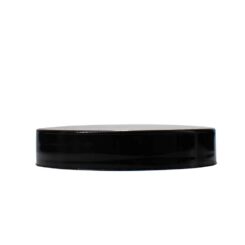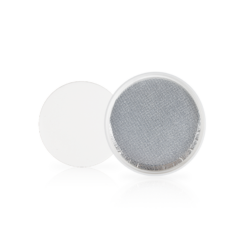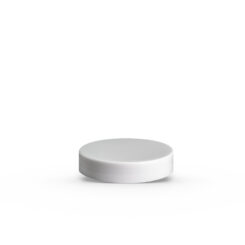Why a Heat Induction Seal Is So Important: A Closer Look
[lwptoc]Even if they don’t know it, most people already have some experience with a heat induction seal. Whenever you pry the little silver disc off the top of a fresh bottle of a food product, an unused bottle of medication, or a new beauty product, you’ve broken a heat induction seal.
These seals are used across a wide array of industries and can serve a number of different purposes. They’re most commonly used to seal caps on various bottles and jars.
Read on to learn all about heat induction seals, how they’re applied, and what benefits they can offer.
What Is a Heat Induction Seal?
A heat induction seal is the foil cap inside a jar or bottle. Thanks to the process of heat induction, this creates an air-tight hermetic seal.
Most of these seals contain four different parts working together. The first layer is usually a paperboard product that nests just underneath the lid. The next layer is wax to bind with the third layer, the aluminum disc that sticks to the container. Seals also contain a fourth layer of plastic polymer film underneath the aluminum.
Plenty of industries can make use of this sealing process. Essentially, any company that ships products in a container can benefit from heat induction sealing. It’s a mainstay in the food and beauty industries, where air-tight containers are important to a product’s integrity.
How Does Induction Sealing Work?
Induction sealing is a non-contact process performed largely by machinery. In large warehouse settings, the process can be mostly automated, and smaller outfits use a similar process to seal small batches of product.
The first step in the induction sealing process is to ensure that the induction-lined cap is properly affixed to the container. Caps need to be applied with the proper amount of torque to ensure that the induction seal is in contact with the lip of the container.
Then, the container passes under a sealing head. This machine generates an electromagnetic current that heats up the induction-lined cap.
As the cap gets warmer, a few things happen. First, the wax that binds the paperboard to the aluminum melts and is absorbed by the paperboard. Then, the layer of polymer under the aluminum melts and adheres to the lip of the container. This creates the heat seal.
Choosing the Appropriate Sealing Head
The size and shape of the container determine the kind of sealing head used in the heat induction process.
For larger caps, a flat sealing head is preferred. It allows for the sealing of caps with a diameter of 53mm and larger. Flat sealing heads produce a widely-dispersed magnetic field. This allows it to seal caps of all sizes, but the container needs to be centered under the sealing head to ensure the best possible seal.
For smaller caps, a tunnel sealing head is used. These feed containers through a narrow passageway and direct the electromagnetic current in a concentrated area on the neck of the container. This allows for the ability to heat thicker seals, like the ones on child-proof containers.
All caps smaller than 53mm in diameter will likely need to go through a tunnel sealing head, but these machines can only accommodate a limited range of container sizes.
Finally, an all-in-one sealing head is perfect for industries with a range of cap sizes. These can accommodate caps from 28mm to 120mm in diameter.
Picking the Right Container
Whether you ship your products in glass, plastic, metal containers, induction sealing is usually achievable. However, certain containers are easier to seal than others.
Plastic containers with plastic caps pose the least amount of issues. The electromagnetic field won’t react with the plastic container and the plastic polymer has no issues bonding to the lip of the container.
Glass containers need to be treated before they can be induction sealed. Amber glass jars, used in cosmetics for their UV-blocking capabilities, are an example.
Finally, metal containers can be induction sealed, but sealing is made difficult by the heat generated in the process. Metal containers typically come with a metal lid, and the lid can get extremely hot and difficult to handle after being exposed to the electromagnetic current.
Benefits of Using Heat Induction Sealing
Heat induction is a versatile sealing method suitable for all sorts of products. No matter what industry you’re a part of, it can offer you plenty of benefits.
Leak-Proof
Heat induction creates an air-tight package seal. This means that you won’t have to worry about your products surviving shipping and handling while they make their way to the consumer.
It will also help you remain in compliance with various retail companies, like Amazon, that require leak-proof packaging.
Products Stay Fresh for Longer
Sealing your containers with heat induction helps give your products a longer shelf life. They’ll arrive for your consumers fresh and unadulterated.
It can also help preserve products that need to be shipped over great distances. If you’re shipping a food item to another continent, you’ll need the hermetic seal that heat induction provides.
Anti-tampering
To open a container sealed with heat induction, you’ll have to break the packaging seal. This provides a fool-proof way for a customer to know if a product has experienced tampering.
Save Money Per Unit
This form of sealing can even help bring down your cost per unit when compared to other sealing methods. Induction sealing and its associated machinery are incredibly energy efficient, have little downtime, and require little maintenance. You’ll also save money on safety recalls, as your products arrive fresh and without leaks.
Heat Induction Seals from FH Packaging
Heat induction is one of the most common ways to secure a container. Making use of an electromagnetic current, it produces an air-tight, leak-proof seal.
Consumers are already familiar with these kinds of seals and equate them with freshness and a tamper-free product.
Sound like something you could benefit from? Take a look at FH Packaging’s extensive list of shipping products and start sealing your containers with their heat induction seal.



